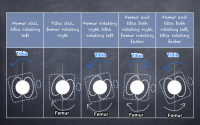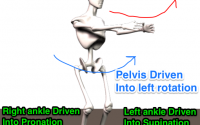What is Compensated Movement?
This is a question of what is compensated movement, is one I’ve wrestled with many times. On the face of it, a fairly simple question to answer. However, it really gets me thinking! Initially, my thought was that it was an alternative movement used by the body when the movement it would normally choose is unavailable…for what ever reason.
On the surface this makes good sense. My problem came when I realised that without compensation I’m not sure we’d be able to move much at all. I think it’s system flexibility that allows our movement to adapt. We need to adapt to the environment we are in and to be successful in the movements we use.
How do you Explain Compensated Movement?
When I’m explaining this to my patients I always say that you ask your body to complete a task, you often don’t choose how that task is accomplished. Most of the time…it just happens. However, as a therapist/movement coach I am looking for ways of helping people move ‘better’. Help them move with less fear, less pain. Help them recover from whatever injury they are suffering. I watch them move and challenge their body to see where I think the limitations are. Maybe supplement with manual therapy, soft tissue or movement strategies to reduce these limitations and return to more ‘normal’ movement. Again ‘normal’ is such a an inaccurate word for me…what is normal? who is normal?
Personally, for those kind of words ‘compensation’, ‘normal’, ‘neutral’…etc don’t quite describe what I mean…there’s probably no such thing as normal and compensation is simply an alternative movement strategy. However, when you are talking to your patients you don’t want to be lecturing them for half an hour…so I tend to use these words.
What do you see?
An example of compensation might be something like the shoulder hiking up when abducting. You see it in the shoulder girdle when someone has a frozen shoulder. This is fairly clear cut. However, some of the compensations I am looking for are more subtle and not necessarily at the site of the injury. So what is ‘normal’ and what is ‘compensation’? To be honest I think that can only come down to the judgement of the therapist. If you do your assessment and feel a change needs to be made (increase ROM, strength, etc) then you have to clinically reason you judgement.
When you are training you are told to look at the opposite side to get an idea of ‘normal’ and then make your decision based on that. Obviously, this can’t work with all situations or conditions, however, it’s not a bad rule of thumb. I think it’s important not to get too hung up on symmetry, it’s only a guideline, not a rule.
So to come back to the original question…’what is a compensated movement?’ I’m not sure you can have too much of a generalised definition, because movement is very individual. I think you need to make clinical decisions based on your assessment and experience. Your decision will likely be better based on the individual in front of you rather than any generic norms.
I’d love to hear other peoples opinions on this one…feel free to comment below
Physioblogger


